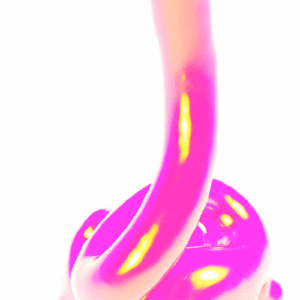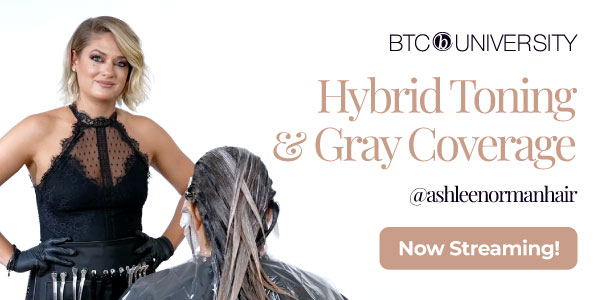What Would You Do: Pre-Softening Hair for Complete Gray Coverage
Advice From The BTC Community On Pre-Softening Services For Gray Coverage
Coloring a client with pesky grays? A member of the BTC fam is seeking advice on how to achieve complete color coverage with a pre-softening technique. Is this technique still relevant or has technology in haircolor changed the coloring game? Scroll down to see what fellow stylists have to say!
“Do a lot of stylists pre-soften hair for gray coverage? How exactly does pre-softening with hydrogen peroxide work? I know that alkalinity (ammonia) swells the cuticle but peroxide is acidic. How does putting acidic peroxide on the hair to pre-soften cause better penetration of the color mix? Do I use this technique all over her gray before I color? Thank You for any advice you can share!”
First Things First: Why Pre-Soften?

- Pre-softening is done before a color service to ensure complete coverage on resistant gray hair regrowth.
- Color developer which is made of hydrogen peroxide, is applied to the regrowth area in order to “open” or “lift” the cuticle layer of the hair.
- A lifted cuticle layer will allow for better color penetration when applying a mixed color formula.
Out with the Old, In with the Tube

“That’s an old method that doesn’t work. Put your color on first (alone) then mix as usual and apply all over gray.” – @haarhausla
“Pre-softening does absolutely nothing with developers. The power is in the tube, if you want to ‘pre-soften + double pigment’ just apply the color straight from the tube and then apply your formula with developer. The power is in the tube!” – @hairbyanalicia_
“Don’t use developer to pre-soften. Instead, use unmixed color straight from the tube. Then, apply your color formula directly over top. Peroxide will lift the cuticle but ammonia or its substitutes will drive the color inward. Think about it this way. Is the cuticle not opening? Or is the color not getting right in there? Pre-soften with color and not only will you drive the pigment in deeper, your formula will have more pigment molecules in general. Lest we forget developer can dilute.” – Bren Turner
“This is a super old wives’ tale! Peroxide is acidic in pH and we know that we need alkalinity to raise the cuticle of the hair. Since peroxide has no alkalinity, it is actually recommended to use straight color out of tube on the most resistant areas and then use a color formula normally directly over the top of it.” – @jrodav
“Peroxide doesn’t pre-soften because it’s acidic and closes the cuticle. The color itself is alkaline and is what you need to pre-soften.” – Anggi Kunkle Foster
“I apply unmixed color onto stubborn areas, it always lasts longer and covers seamlessly. The only time in hair school that I applied peroxide to pre-soften it created hot roots, no thanks.” – Julee Heslop
Innovation and Saturation

“I use Redken Cover Fusion for gray coverage. It’s easy to use and gets great coverage with no pre-softening. If you have issues with coverage, first be sure your sections are appropriately thin and that your saturation is even. Then, consider if your client’s hair is prepped and ready. If they have buildup on the hair (either the physical waxy kind or chemical, like minerals or medication), a clarifying treatment might be a good idea.” – Jennifer Folmar Morris via FaceBook
“Honestly, I think proper saturation is better than pre-softening. I used to have issues with translucent coverage so I contacted a professional brand representative and learned that I might not be using enough color. So, take SUPER thin sections and use enough product with proper formulation and it should fix your problem!” – @twowesthairsalon
“This is SO old school, there are many hair color lines that CAN cover resistant gray without this dated process.” – @anarchyinbedrock
“Pre-softening for great coverage is an old school method. However, I think most color lines have upgraded their color lines to better cover gray which makes that step unnecessary. If it’s on a new client, ask them if they have trouble covering their gray. It never hurts to ask questions, of your clients or fellow stylists.” – @hairandmakeupbylucia
“Most color lines have evolved over time and continue to get better and better at covering even the most resistant gray/white. Just apply the color to the most resistant areas first (usually hairline/around ears). Then, go back over it again before setting your time making sure to thoroughly saturate the areas.” – @j.finnberg
“Pre-softening is very old school. It was a technique developed before we had better gray cover colors. It is also a very expensive and time-consuming technique as you are using more product and taking up more time. Not to mention hot water at the basin literally washes out pre-softener and then the actual color.” – Renee Louise Graham










